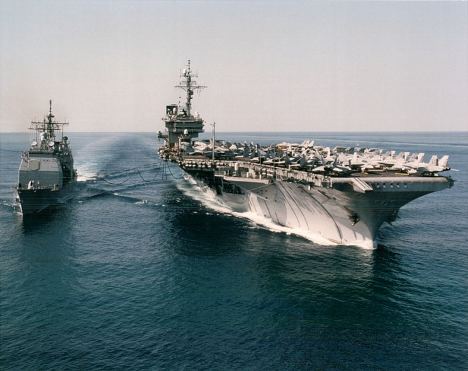In a Moment of Crisis ... You Might Just Have to Steer Into It
As we set our sights on a new normal, I got to thinking about key moments/learnings in my career. Part of that reflection process led me back to an interesting article I first read in May of 1998.
The story describes an extraordinary event that didn’t make much national news, due to the actions of one leader. His approach to a problem was counterintuitive to what most of us would do if placed in this situation. The actions of the captain in a moment of crisis have stayed with me all these years later. Throughout my career, even as recent as two weeks ago, I’ve used the idea that in a moment of crisis we sometimes make decisions that while different, ultimately steer us to safe waters.
For a little context, I was just a few years into my career as a Communications leader when this article was written. It would be an understatement for me to say how important these lessons have been in my career. Here is the story from Saturday May 23, 1998.
San Diego Union-Tribune, The (CA)
May 23, 1998
Close call
Author: James W. Crawley
Page: B-1
Article Text:
The maneuver should have been routine.
Ensign Pat Rogers, with Capt. Bill Sullivan instructing, was supposed to steer the Cowpens on a parallel course 300 yards from the aircraft carrier Kitty Hawk.
It was only Rogers’ second time conning the ship in tight quarters. But the skipper had done it a hundred times or more while refueling at sea.
As the Cowpens sailed parallel to the Kitty Hawk, a 30-knot crosswind unexpectedly blew the 1,000-foot-long carrier toward the smaller cruiser.
Within seconds, the distance narrowed to 100 yards. And the Kitty Hawk was still coming.
Sullivan took charge.
“Captain has the conn,” he yelled to the startled bridge crew.
The wind shoved the Kitty Hawk closer. They were seconds away from a collision.
The carrier’s thick steel hull would crush the cruiser's aluminum superstructure, likely killing sailors inside.
“All engines ahead, full!”
The Cowpens' four jet engines whined as the ship's speed passed 20 knots.
The bridge crew looked from their captain to the carrier behind him. They knew the captain's orders required immediate and absolute obedience.
“All engines ahead—Flank 3!” Sullivan called.
The engines roared into burnout mode, 32 knots plus, usually reserved for combat emergencies.
Instinct suggested a left turn, away from the looming carrier.
But instinct was wrong.
Unlike a car, a ship’s rear end moves first and in the opposite direction of the turn. Turn the rudder right, the stern swings left.
Sullivan ordered a slight right turn, pointing the bow toward the Kitty Hawk. The ship straightened out.
But as the Cowpens moved faster and faster up the port side of the Kitty Hawk, the bigger ship kept sliding closer. Sailors on the carrier's flight deck ran for safety.
Sullivan looked back. The carrier's angled flight deck was going to strike the Cowpens' rear superstructure.
As the Cowpens' bridge pulled ahead of the Kitty Hawk 's bow, he ordered a hard right turn, directly in front of the giant ship.
Everything forward of the bridge moved right. Everything behind the bridge slid left.
The turn was so sharp that the ship leaned outward, away from the carrier. The Cowpens pulled safely out of harm's way.
Sullivan estimated that they missed colliding by less than 10 feet.
While the crew recovered its composure, Sullivan replayed the incident over and over in his mind, analyzing every second, every command, every reaction.
He had allowed the Cowpens to get too close. Only the ship's well-trained crew, and his own sea experience, had rescued them.
That night, Sullivan didn't sleep very well.
A collision would have ended his career. After 25 years in the Navy, he had been reminded again of the daily risks of serving at sea.

